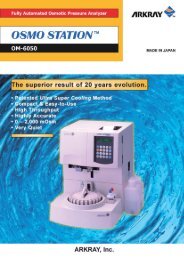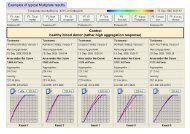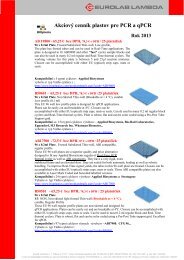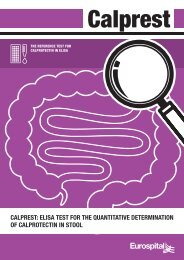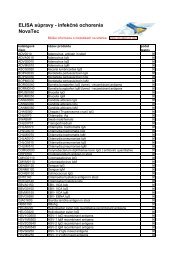Diagnostics Division of AGROLABO SpA group
Diagnostics Division of AGROLABO SpA group
Diagnostics Division of AGROLABO SpA group
You also want an ePaper? Increase the reach of your titles
YUMPU automatically turns print PDFs into web optimized ePapers that Google loves.
Immun<strong>of</strong>luorescence was first used more than fifty years ago and is now a common laboratory<br />
technique used to examine individual proteins that are in a preserved cell. It can determine<br />
both the location and relative quantity <strong>of</strong> a specific protein. Antibodies are used that<br />
specifically recognize and bind to the protein <strong>of</strong> interest. These antibodies contain a fluorescent<br />
tag that absorbs light and emits it at a different wavelength. The fluorescence is then analyzed<br />
under a fluorescent microscope and the resulting signal corresponds to the protein's location.<br />
Antibody detection:<br />
Agrolabo’s immun<strong>of</strong>luorescence kits detect Immunoglobulin G (IgG), the most abundant<br />
immunoglobulin which appear circa 40 days following exposure to antigen.<br />
Packaging:<br />
We supply 10 slide kits (including reagents), packages <strong>of</strong> 10 slides (without reagents) and<br />
packages <strong>of</strong> 50 slides (without reagents). Each slides contains 10 or 12 wells, depending on the<br />
pathology. The slides employed for test production have been specifically chosen for their<br />
quality and homogeneity. As part <strong>of</strong> our quality control process special attention is paid to the<br />
distribution <strong>of</strong> the wells and their shaping.<br />
Just as we are able to supply slides separately, we can also supply reagents separately.<br />
The slides are not species specific and thus for those pathologies that are diffused in more than<br />
one animal species, different reagents can be supplied according to the species.<br />
Fluorescence:<br />
Our slides label positive samples with green fluorescent dyes and negative samples with red<br />
fluorescent dyes. This combination <strong>of</strong> colours facilitates reading as the two colours are very<br />
distinct.<br />
Please see overleaf for a list <strong>of</strong> available Fluo slides and kits.<br />
24



